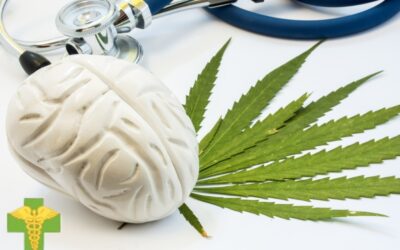What Is Cannabis?
What Is Cannabis?
Cannabis. Weed. Grass. Pot. Whatever you want to call it, this psychoactive drug is more popular than ever before. But what is cannabis, exactly?
Simply put, cannabis is a plant. It’s part of the Cannabaceae family, which contains over 170 different species. The three most popular types of cannabis are Cannabis sativa, Cannabis indica, and Cannabis ruderalis.
In this article, we’ll discuss the history of cannabis, its uses, and its impact on medical marijuana patients.
The History of Cannabis
Cannabis is a plant from Central and South Asia used for centuries as a recreational and medicinal drug. The cannabis plant produces a chemical called THC, which is responsible for the psychoactive effects of marijuana.
The first recorded use of cannabis dates back to 2800 BC, when the Chinese emperor Shen Nung prescribed it for various ailments, including gout, rheumatism, and poor memory.
Now, people of all ages recreationally use cannabis, and it’s an all-natural treatment for a range of medical conditions.
What Is Cannabis Used for?
For some, cannabis is a recreational drug used to relax or enhance the experience of social activities. Others use it for homeopathic purposes to relieve pain, nausea, and other symptoms.
Cannabis is consumed in many ways, including smoking, vaporizing, eating, and drinking. It is also found in topical treatments like ointments and salves.
The side effects of cannabis differ based on an individual’s metabolism, body fat percentage, THC sensitivity, and several other factors. Some people experience a sense of relaxation, while others may feel more anxious or paranoid. The results also depend on how much cannabis is consumed and the THC content.
Cannabinoids
Cannabinoids are active ingredients in cannabis, and there are over 100 distinctive cannabinoids, including THC and CBD. They bind to cannabinoid receptors throughout the brain and affect bodily functions responsible for helping our bodies achieve homeostasis. From there, cannabinoids interact with the body’s endocannabinoid system, which regulates pain, appetite, mood, and memory.
THC, the most commonly recognized cannabinoid, is responsible for the psychoactive effects of marijuana. While CBD, a non-intoxicating cannabinoid, has gained popularity lately due to its potential therapeutic properties. It’s also largely accessible to most of the United States because of its legal status.
Lesser-known cannabinoids are also being researched for their potential therapeutic benefits. For example, CBG is showing promise as an antibacterial agent, and THCV may help regulate blood sugar levels.
Medical Marijuana Patients
Cannabis possibly helps with various medical conditions, including chronic pain, anxiety, depression, and insomnia.
For medical marijuana patients, the effects of cannabis can be life-changing. If you’re considering cannabis for medicinal purposes, speak with a doctor first to see if it is the right choice and treatment for you.
The Bottom Line
Cannabis is a plant with an extensive history of use as a recreational and medicinal drug. The effects of cannabis depend on the person, but it can potentially be used to help with pain relief, anxiety, appetite loss, and several medical conditions. If you’re considering marijuana for medicinal purposes, speak with a doctor first to find out medical marijuana is right for you.
Sources:
https://www.britannica.com/plant/Cannabaceae
https://www.healthline.com/health/what-is-cannabis#components







